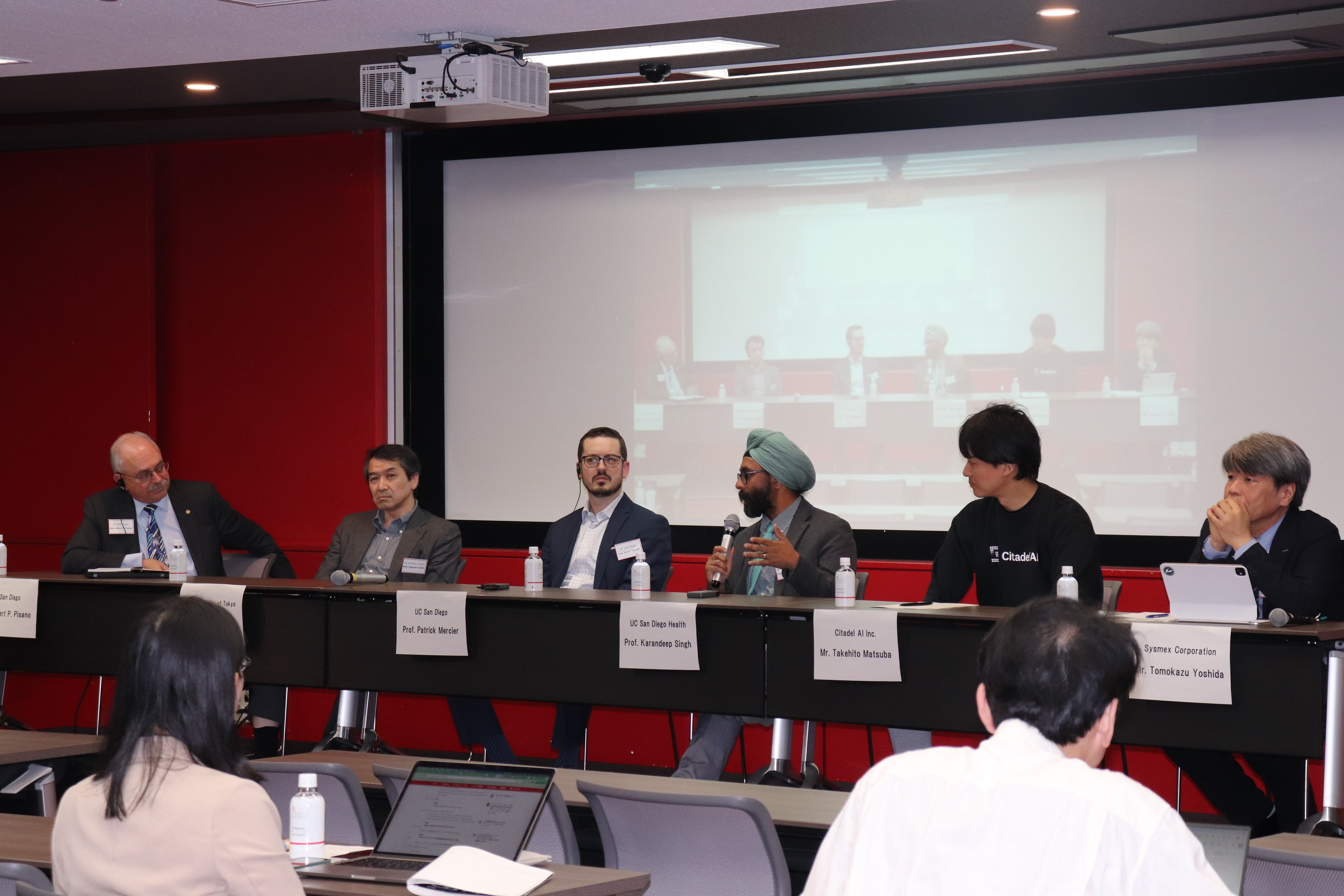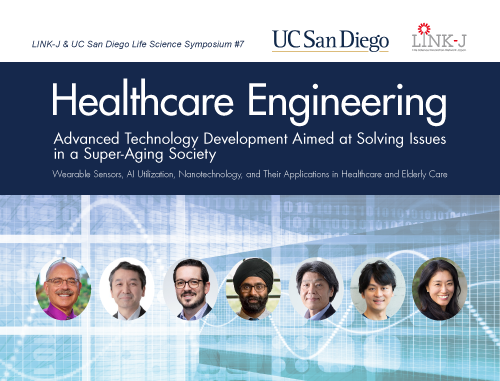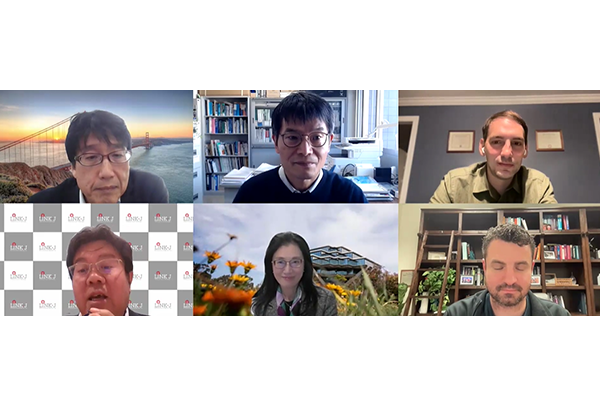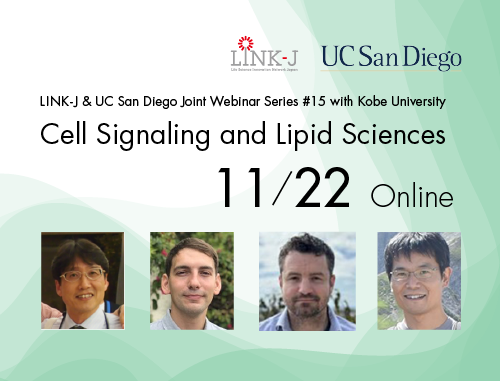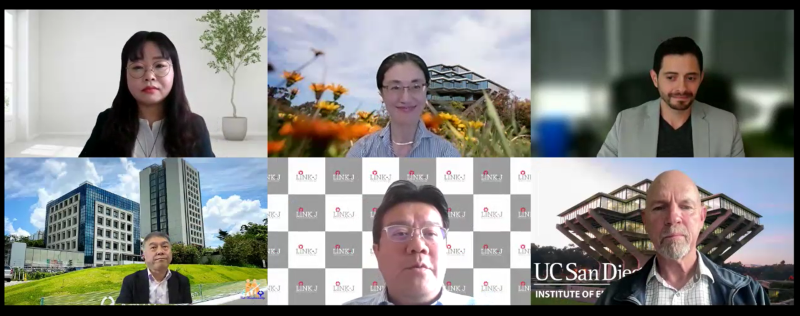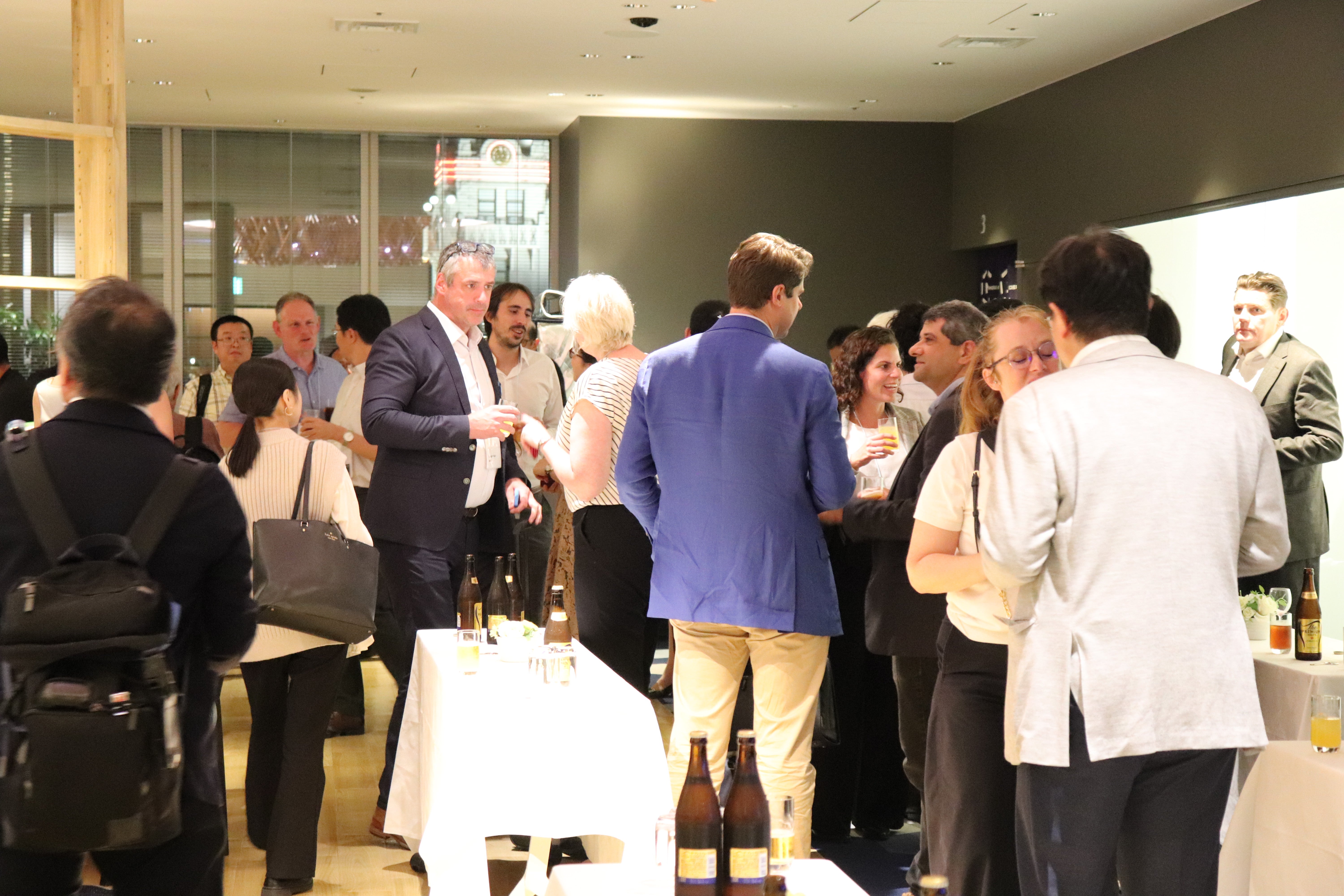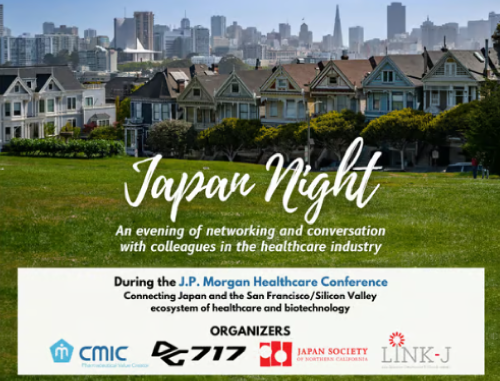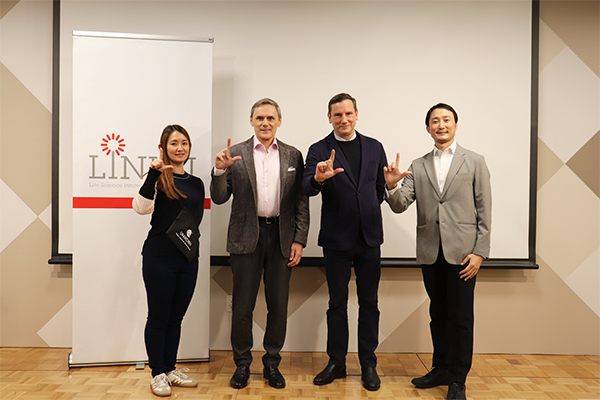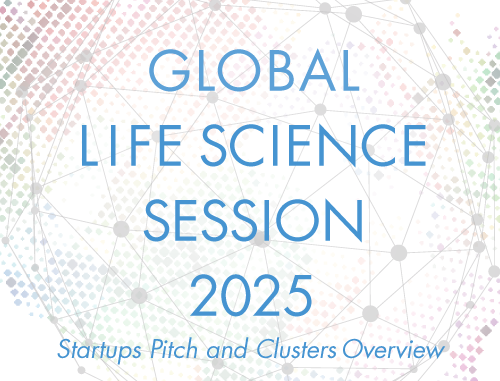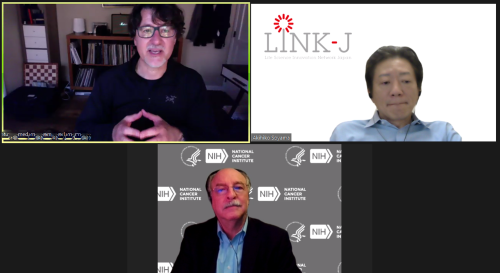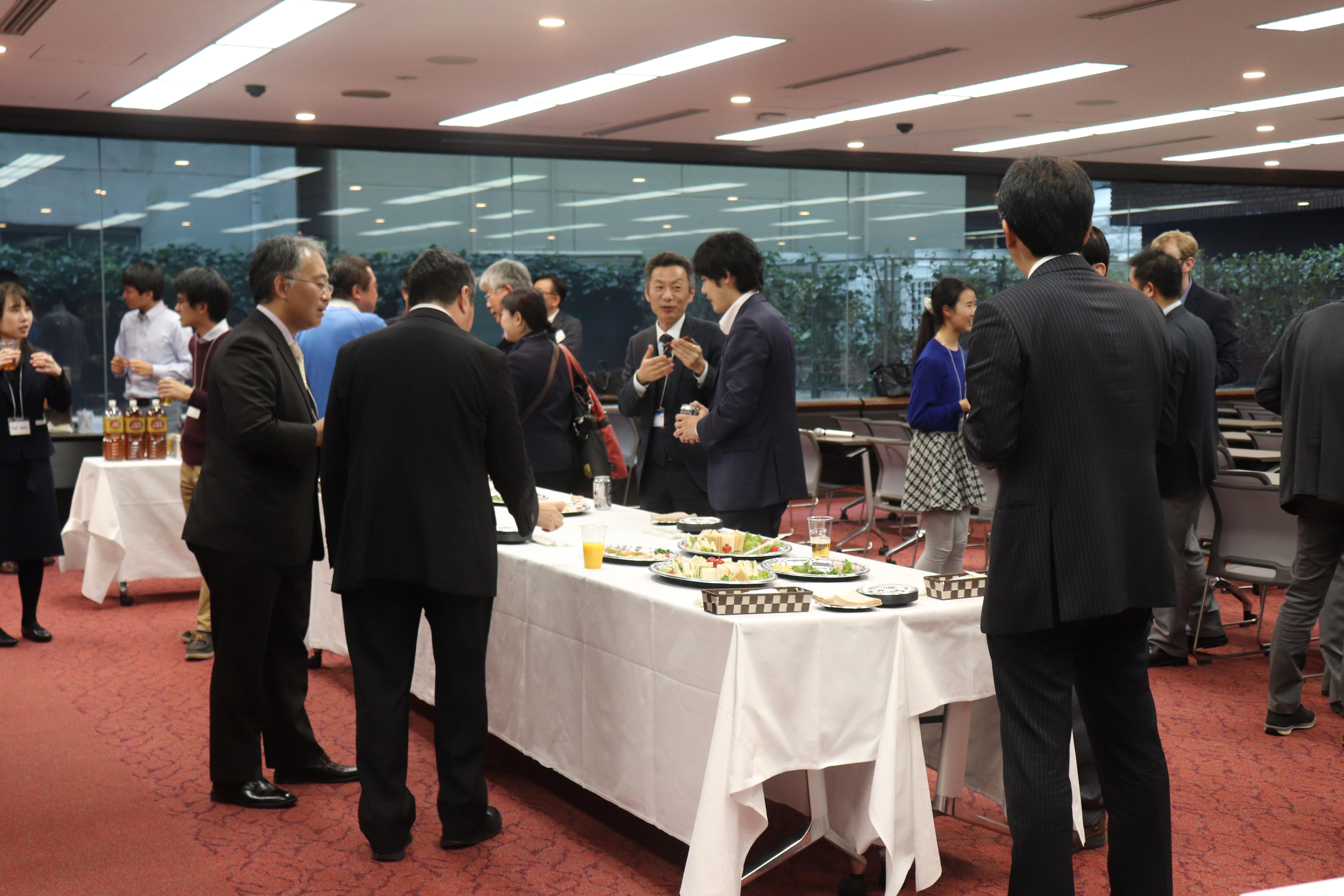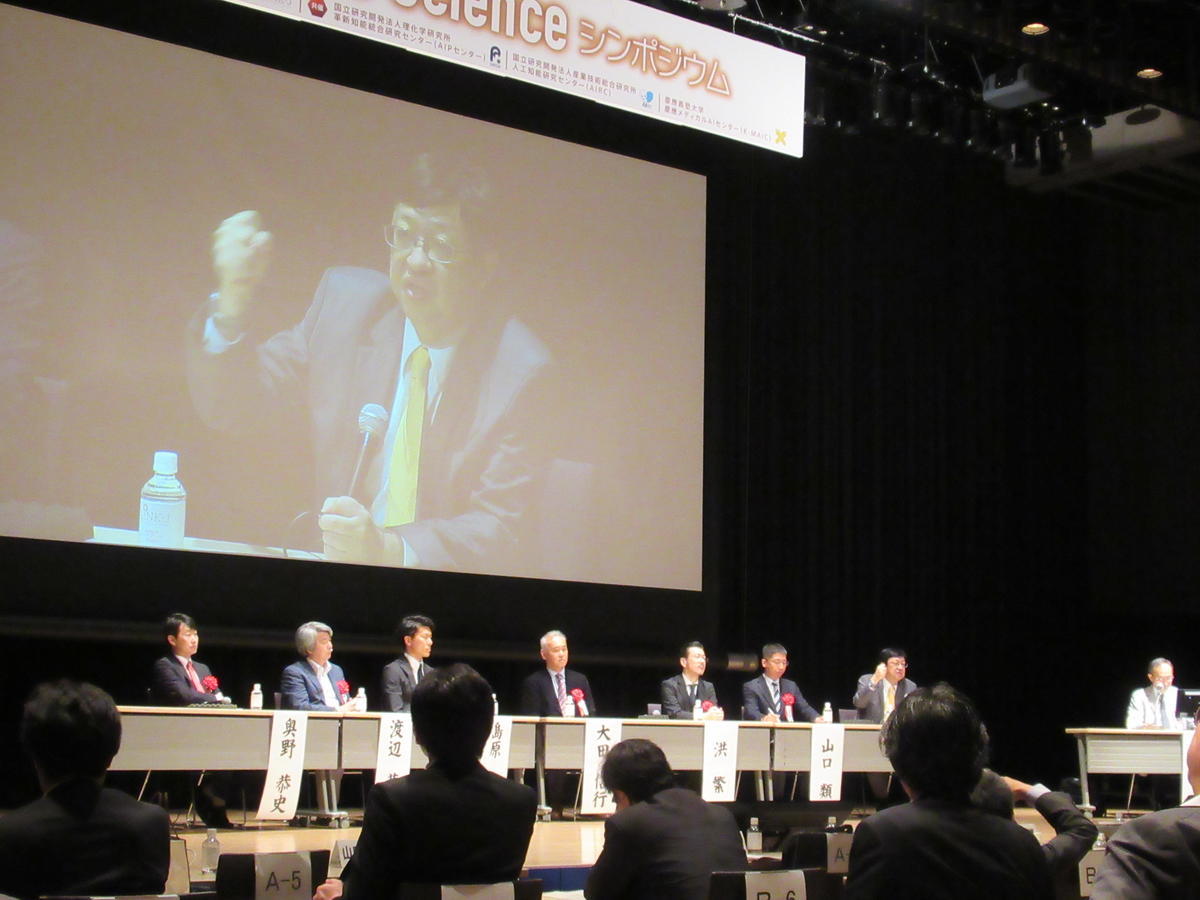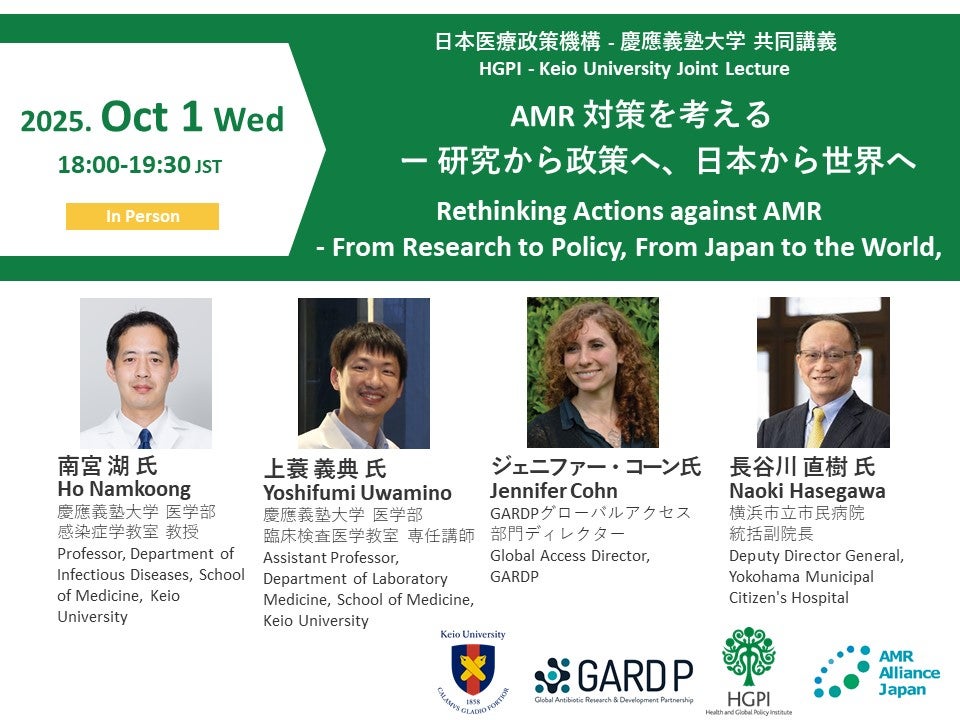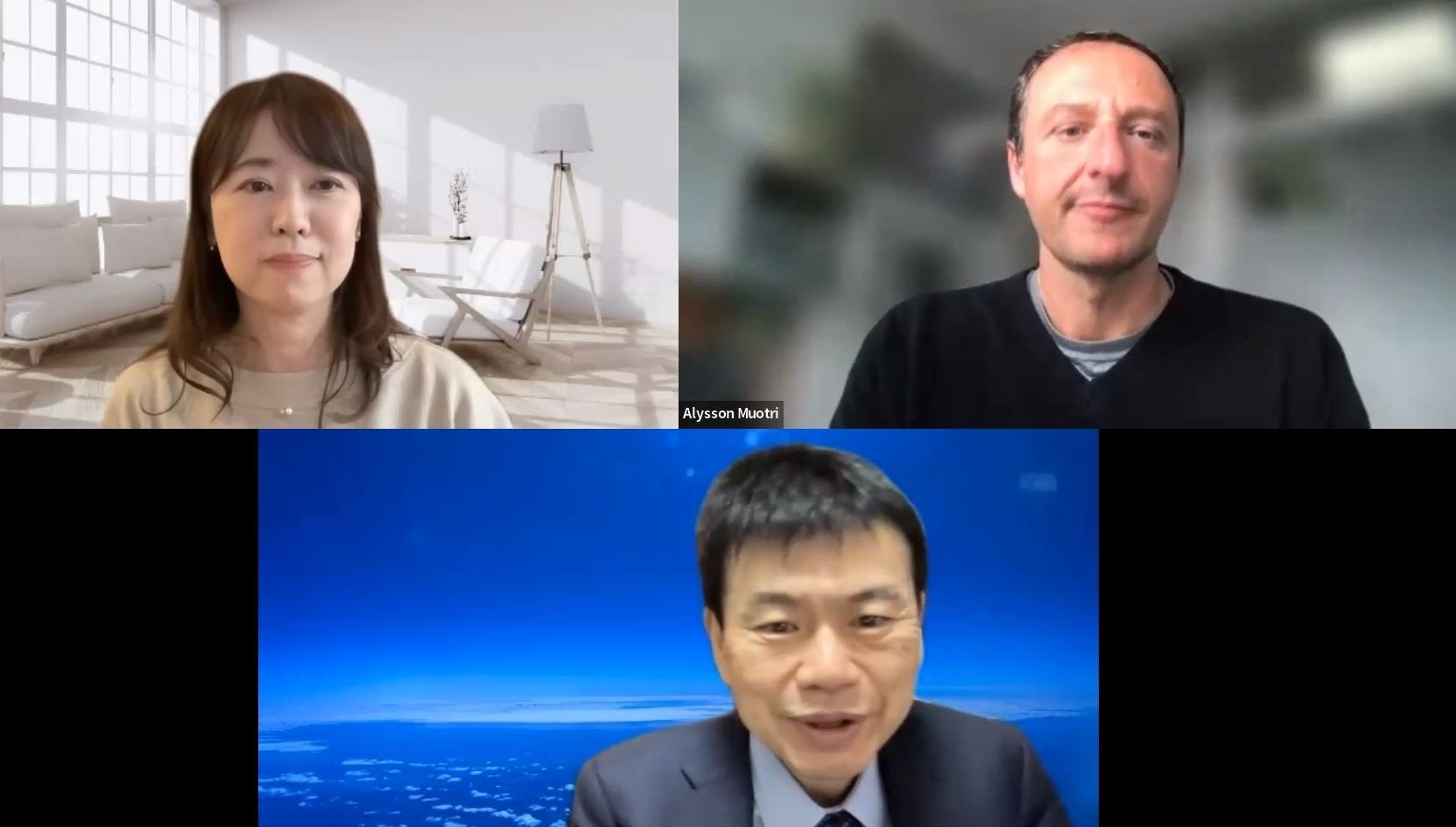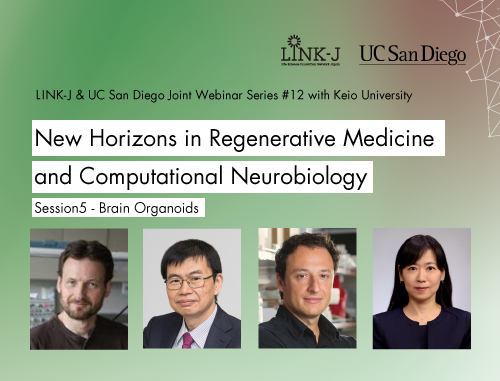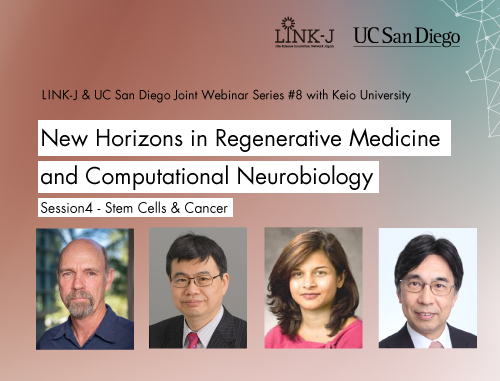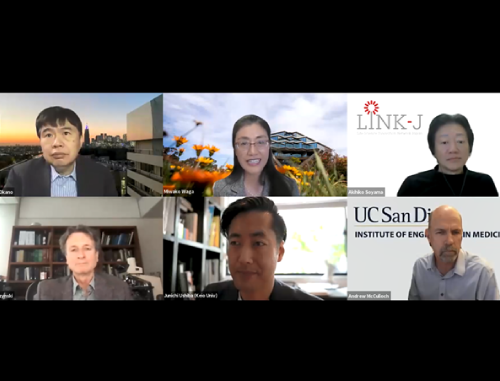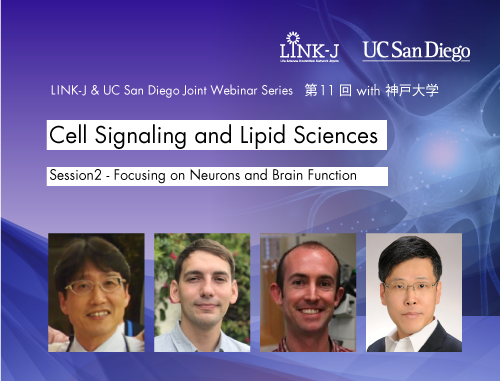LINK-J & UC San Diego Joint Webinar Series #8 with Keio University "New Horizons in Regenerative Medicine and Computational Neurobiology - Session 4: Stem Cells & Cancer" was held on Oct 6, 2021. (Host: LINK-J, Co-Host: University of California San Diego [UC San Diego])
For the eighth in the Joint Webinar Series, Professor Tannishtha Reya from UC San Diego and Professor Hideyuki Saya from Keio University discussed new developments in stem cells and cancer. Professors Andrew McCulloch (PhD, Distinguished Professor of Bioengineering and Medicine; Director, Institute of Engineering in Medicine, UC San Diego) and Hideyuki Okano (MD, PhD, Professor and Chairman, Department of Physiology, Keio University School of Medicine) moderated a discussion.
The recording of the webinar is available from the link below.
https://youtu.be/x821XrVcU0E
Please note that the webinar might be deleted from the archive in the future. We encourage you to subscribe to LINK-J's YouTube channel to view great content.


At the beginning of the webinar, Akihiko Soyama (President and CEO, Director, LINK-J), Ms. Miwako Waga (Director of International Outreach, UC San Diego), Professor Andrew McCulloch, and Professor Hideyuki Okano gave the opening remarks.
"Stem Cell Signals in the Origin, Progression and Therapy Resistance of Cancers"
Dr. Tannishtha Reya (PhD, Professor, Department of Pharmacology; Director, Division of Cancer Biology; University of California San Diego, School of Medicine)
She introduced her recent studies from the below-mentioned views.
Our research focuses on the signals that control stem cell self-renewal and how these signals are hijacked in cancer. Using a series of genetic models, we have studied how classic developmental signaling pathways such as Wnt, Hedgehog and Notch play key roles in hematopoietic stem cell growth and regeneration and are dysregulated during leukemia development.
In addition, using real-time imaging strategies we have found that hematopoietic stem cells have the capacity to undergo both symmetric and asymmetric division, and that shifts in the balance between these modes of division are subverted by oncogenes.
Further, regulators of this process, including the cell fate determinant Musashi, are critical players in driving progression of solid and liquid cancers and could serve as targets for diagnostics and therapy.
Ongoing work is focused on understanding the mechanisms that drive therapy resistance after drug delivery, as well as developing high resolution in vivo imaging approaches to map normal stem cell behavior and interactions within living animals, and to define how these change during cancer formation.
"Novel strategies targeting cancer stem cells"
Dr. Hideyuki Saya (MD, PhD, Professor, Division of Gene Regulation, Institute for Advanced Medical Research, Graduate School of Medicine, Keio University)
He introduced his recent studies from the below-mentioned views.
The major cellular antioxidant glutathione (GSH) protects cancer stem cells from oxidative damage that can lead to the induction of ferroptosis, an iron-dependent form of cell death triggered by the aberrant accumulation of lipid peroxides.
Inhibitors of the cystine-glutamate antiporter subunit xCT, which mediates the uptake of extracellular cystine and thereby promotes GSH synthesis, are thus potential anticancer agents.
On the other hand, the efficacy of xCT-targeted therapy has been found to be diminished by metabolic reprogramming that affects redox status in cancer stem cells.
The identification of drugs for combination with xCT inhibitors that can overcome resistance to xCT-targeted therapy might thus provide the basis for effective cancer treatment.
Based on this premise, we performed a synthetic lethality drug screen and identified the vasodilator oxyfedrine (OXY) as a sensitizer of cancer cells to GSH-depleting agents including the xCT inhibitor sulfasalazine (SSZ). OXY contains a structural motif required for covalent inhibition of aldehyde dehydrogenase enzymes, and combined treatment with OXY and SSZ was found to induce accumulation of the cytotoxic aldehyde 4-hydroxynonenal and cell death in SSZ-resistant cancer cells. Furthermore, OXY-mediated ALDH inhibition was found to sensitize cancer cells to GSH depletion induced by radiation therapy in vitro. Our findings thus establish a rationale for repurposing of OXY as a sensitizing drug for cancer treatment with agents that induce GSH depletion.
To learn more details, please watch the video recording.
This webinar included time for Q&A and panel discussion, which led to interesting interactions with the audience.
Thank you very much for your active participation in the joint webinar. We plan to offer similar sessions in the future. Stay tuned!
To read about past UC San Diego-related events and reports, please click here.



